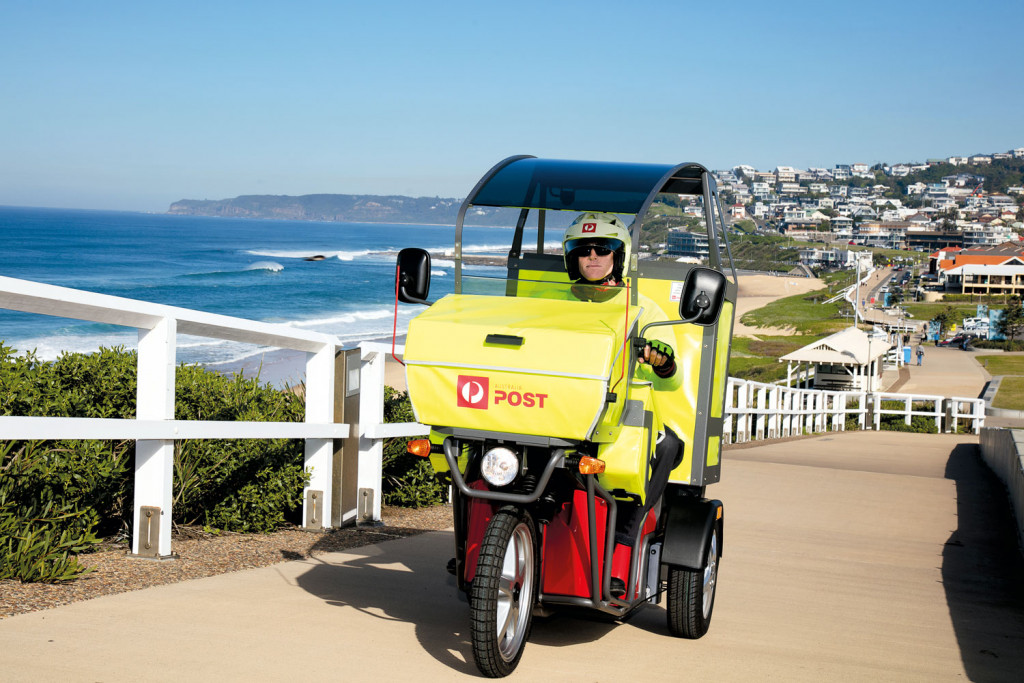
Application of Lithium-ion Batteries in Postal Vehicles: Advantages, Models, and Prospects
Postal vehicles, particularly those responsible for "last-mile" delivery, have become pioneers in urban electrification. Lithium-ion batteries serve as the core power source in these vehicles, with distinct application characteristics.
Core Application Advantages: Why Postal Vehicles and Lithium-ion Batteries are a "Perfect Match"
1. High Compatibility with Operational Models
-Fixed Routes and Predictable Mileage: Postal delivery routes are typically fixed with predictable daily mileage (generally within 100-200 km). This perfectly avoids "range anxiety" associated with electric vehicles, as vehicles can be centrally charged overnight at depots to meet the next day's needs.
-Stop-and-Go Operation: The frequent stopping, starting, and low-speed driving patterns of postal vehicles are inefficient, high-consumption, and high-wear for traditional diesel vehicles. For electric vehicles, however, regenerative braking systems can efficiently recover braking energy, significantly improving energy efficiency.
-High Daily Utilization Rate: Postal vehicles operate daily. Their low electricity costs, compared to expensive fuel costs, allow them to offset the higher initial purchase cost more quickly, demonstrating excellent whole-life-cycle economics.
2. Significant Environmental and Social Benefits
-Zero Emissions and Low Noise: Postal vehicles operate deep within residential and commercial areas. Electrification completely eliminates exhaust pollution and significantly reduces noise, making them particularly suitable for early morning or night operations, aligning with urban environmental protection and community-friendly requirements.
-Corporate Social Responsibility Image: Using zero-emission electric postal vehicles is a powerful measure for postal operators to demonstrate their environmental commitment and enhance their brand image.
3. Clear Policy Drivers
The establishment of "Low Emission Zones" or "Zero Emission Zones" in many cities worldwide will restrict the entry of fuel-powered vehicles in the future. As public service units, postal services must comply率先 (shuàixiān - take the lead), and electrification is the only way to ensure their future access rights.
Main Application Models and Typical Cases
1. Light-duty Freight Vans
This is the primary application form, used for transporting and delivering packages and mail.
Typical Cases:
-United States Postal Service (USPS): Plans to purchase tens of thousands of Next Generation Delivery Vehicles (NGDVs), a significant portion of which will be pure electric versions equipped with large-capacity lithium-ion batteries, to replace its aging fuel-powered fleet.
-Deutsche Post DHL: Previously developed its own StreetScooter electric postal vehicle, deploying tens of thousands globally. Although this model has been discontinued, it was once one of the world's largest electric postal vehicle fleets, proving the model's feasibility. DHL is now procuring vehicles like the Mercedes eSprinter and Ford E-Transit to continue its electrification efforts.
-Amazon (Rivian): Although belonging to e-commerce logistics, its business highly overlaps with postal services. Amazon has ordered 100,000 custom electric delivery vehicles from Rivian, which are being deployed on a large scale in the US, demonstrating the great potential of lithium-ion batteries in the delivery sector.
2. Micro Electric Delivery Vehicles
Used for delivering mail and small packages in smaller areas, offering greater flexibility.
Key Technical Considerations
1. Battery Capacity and Lifespan: Postal vehicles do not require extremely large battery packs. They are typically equipped with medium-capacity lithium-ion batteries (usually between 40-100 kWh), sufficient to cover the daily mileage with a margin. The cycle life and durability of the batteries are crucial.
2. Charging Strategy:
-Centralized Overnight Slow Charging: The most efficient and economical method, utilizing off-peak electricity at night.
-Opportunity Charging: Fast charging during lunch breaks or sorting intervals.
3. Vehicle Integration and Optimization: Considering the characteristic of postal carriers frequently getting on and off, vehicle design needs to optimize ergonomics, while battery layout must ensure the maximization of internal cargo space.



